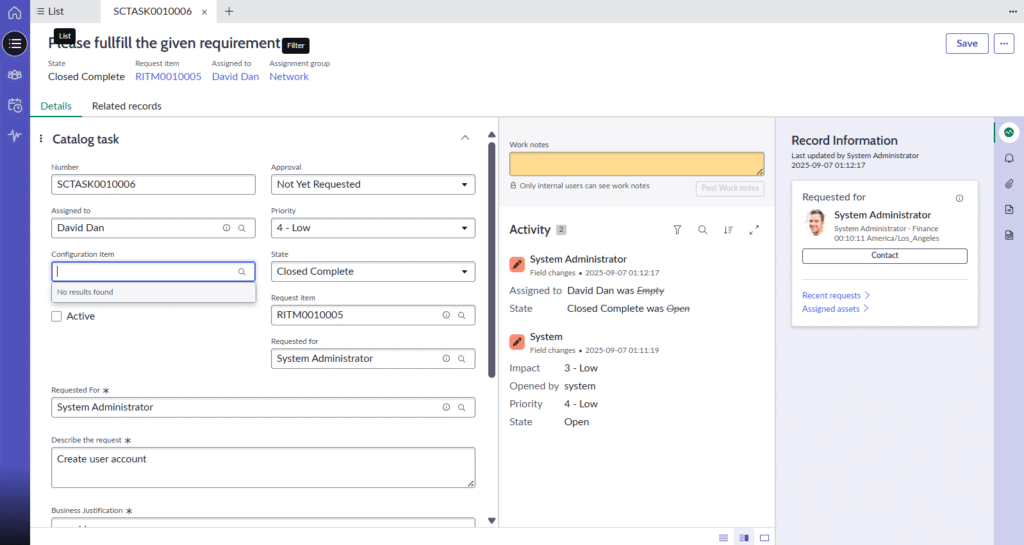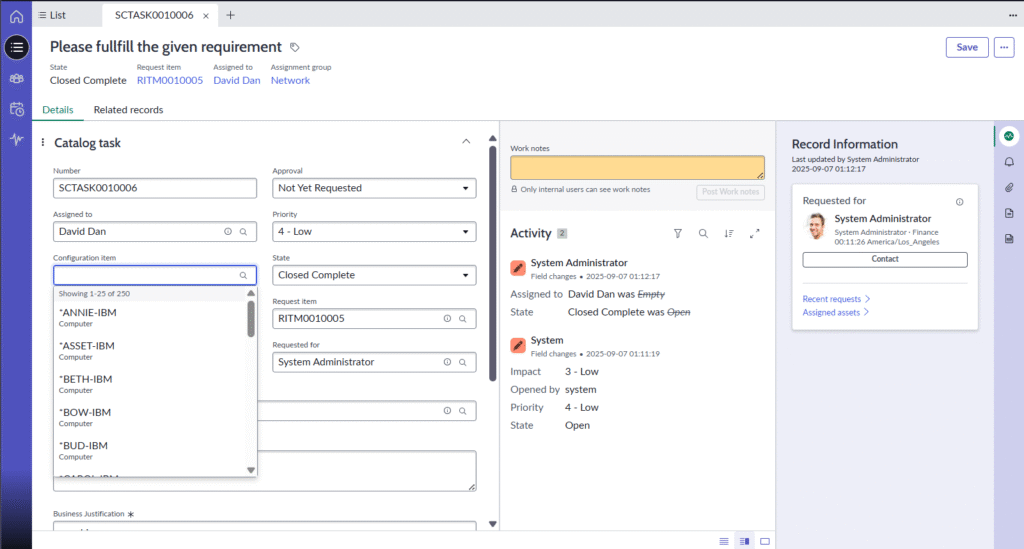ServiceNow introduced a performance-focused change in how reference fields behave in Statements of Work (SOW). By default, when a reference field such as Configuration Item, Service Offering, or Service is empty, clicking it will display only recently selected values instead of automatically pulling the full list of available options.
This improves performance but may feel different for users. If your workflow requires the older behavior (loading all options on click), you can revert it by updating the UX Page Property ref_search_on_click.
This tutorial explains how to do it.
Step 1: About the Property
- Name:
ref_search_on_click - Type: Boolean (
true | false) - Default Value:
false - Scope: Service Operations Workspace (or Global if defined globally)
- Purpose:
false→ Default: empty reference fields only show recent values.true→ Old behavior: empty reference fields show all available values.
Step 2: Open UX Page Properties
There are two ways to get to the property:
- Using the Application Navigator
- In the left navigation filter, type UX Page Properties.
- Select it to open the list.
- Using the Direct URL
- Append this to your instance URL:
sys_ux_page_property.list - Example:
https://your-instance.service-now.com/sys_ux_page_property.list
- Append this to your instance URL:
Either method will display the list of UX Page Properties.
Step 3: Locate the Property
- Search for
ref_search_on_clickin the Name column. - Click on it to open the property record.

Step 4: Edit the Property
On the property form:
- Page: Service Operations Workspace
- Name: ref_search_on_click
- Type: true | false
- Value: Default is
false - Description: “Enable/disable the autocomplete results on empty reference fields in SOW.”
To revert to the old behavior:
- Change Value from
false→true. - Click Update to save your changes.

Step 5: Validate the Change
- Open any record in s.o.w.
- Click into an empty reference field (e.g., Configuration Item).
BEFORE (when values is false)

AFTER (when values is true)

Best Practices
- Performance: Keep it at
falseif your instance has very large datasets, since it reduces unnecessary queries. - User Training: Let users know the difference, so they aren’t surprised when options don’t immediately appear.

